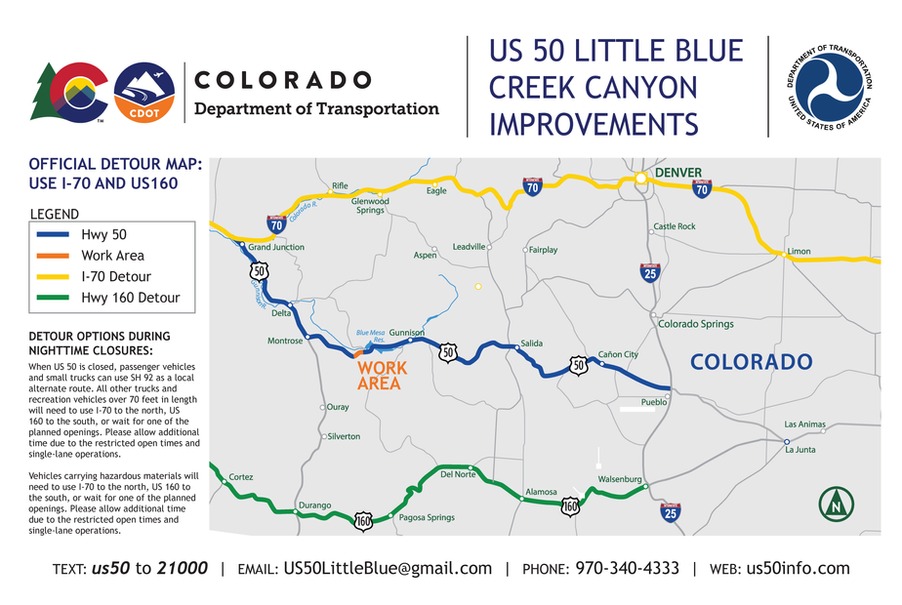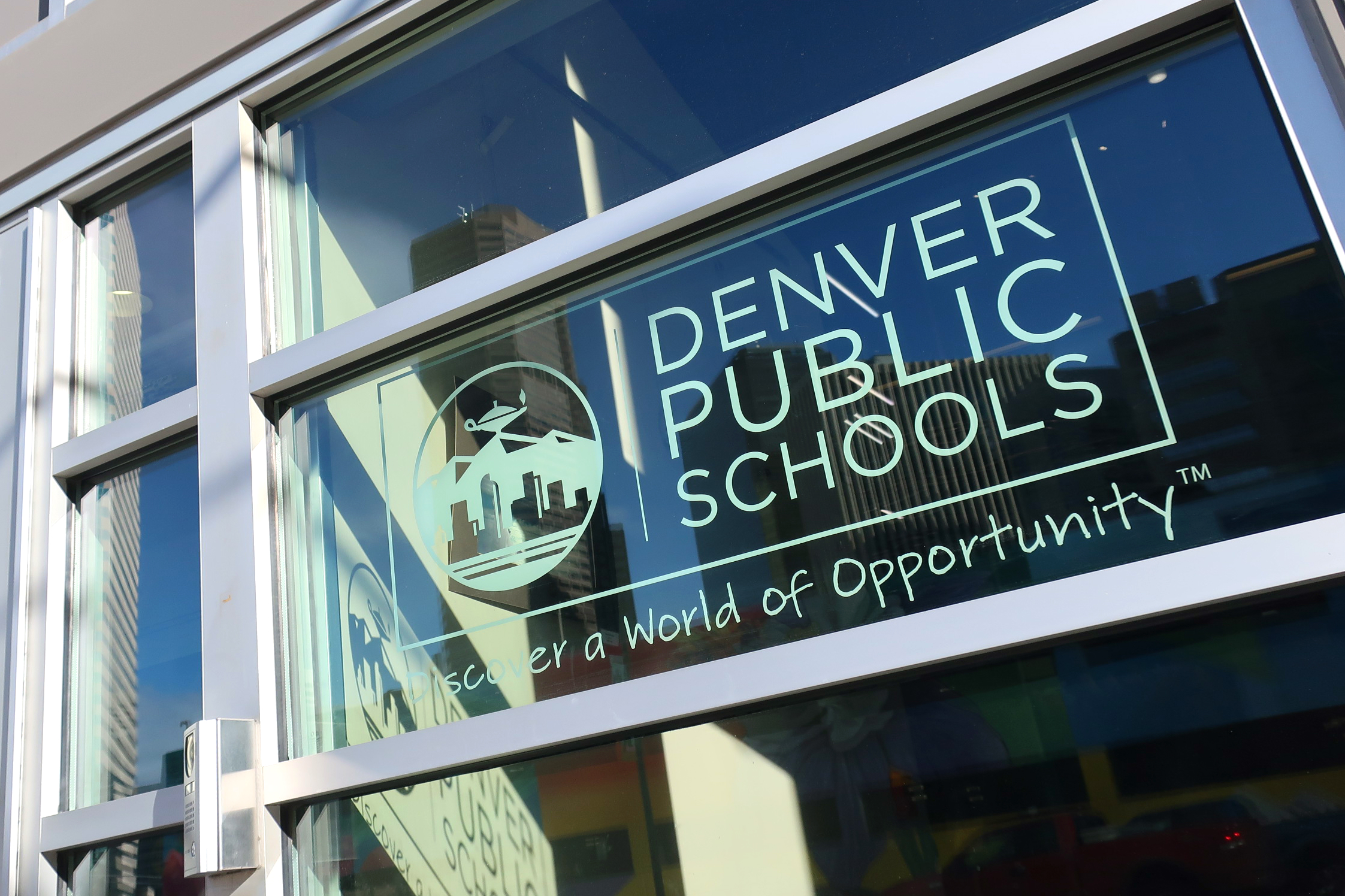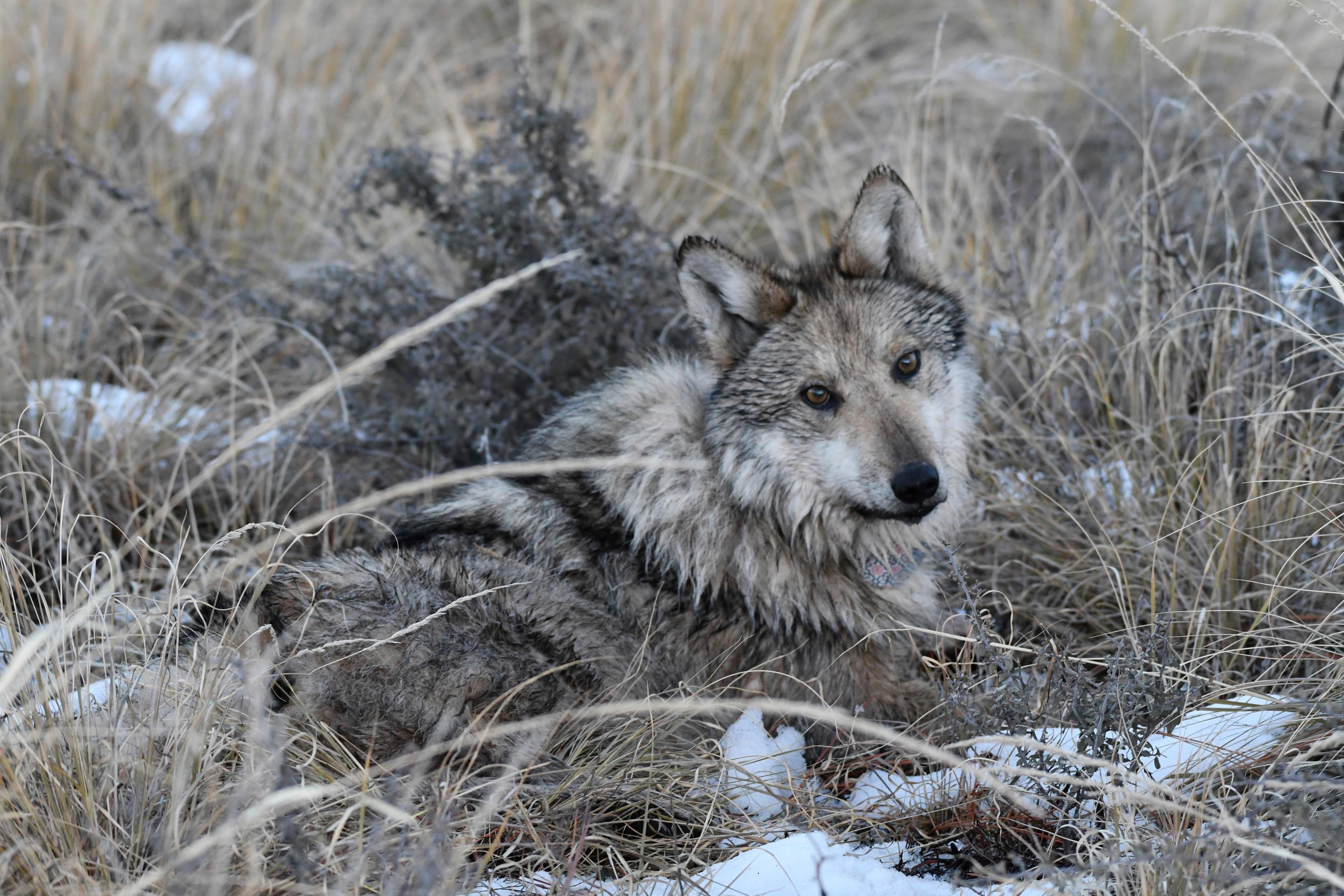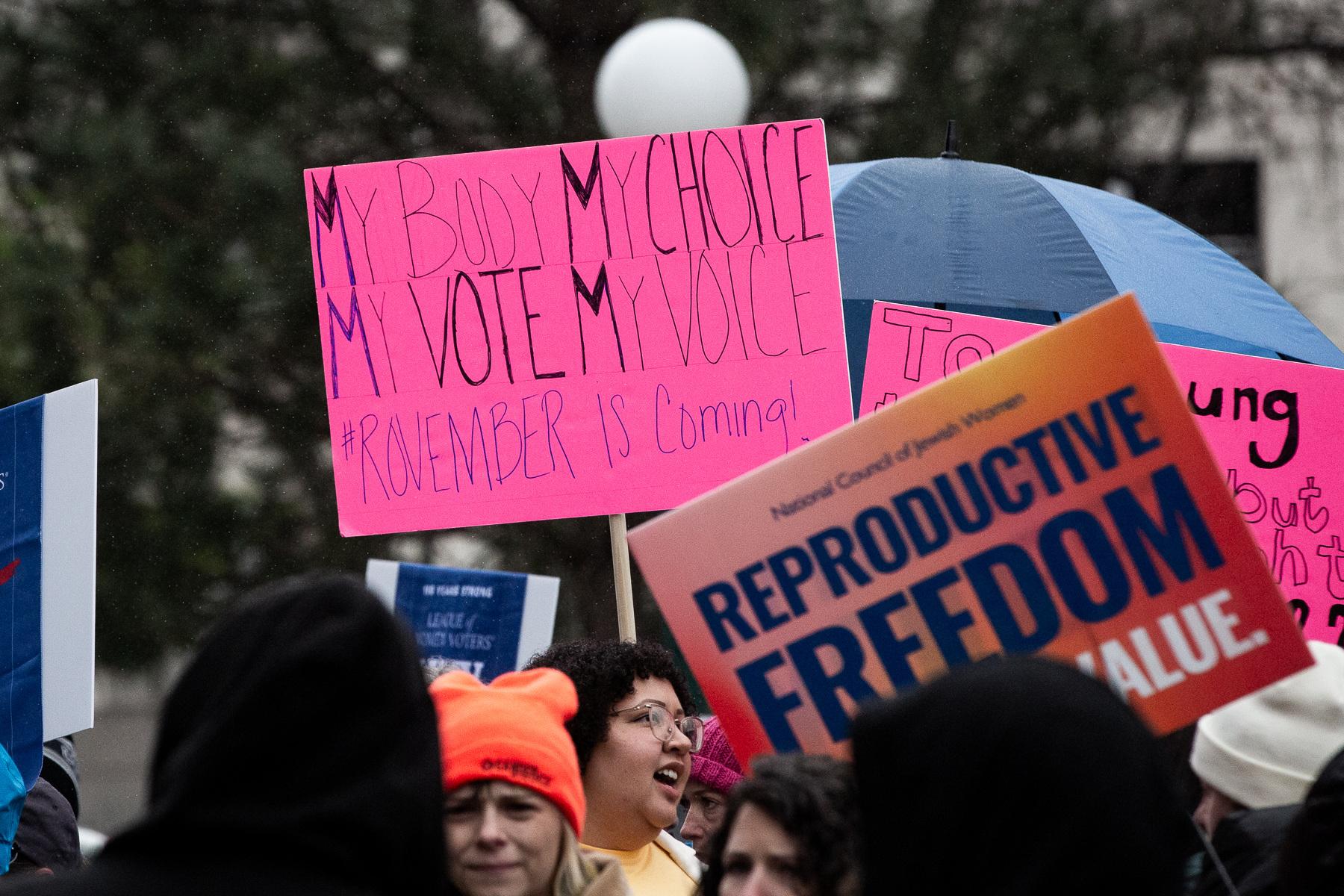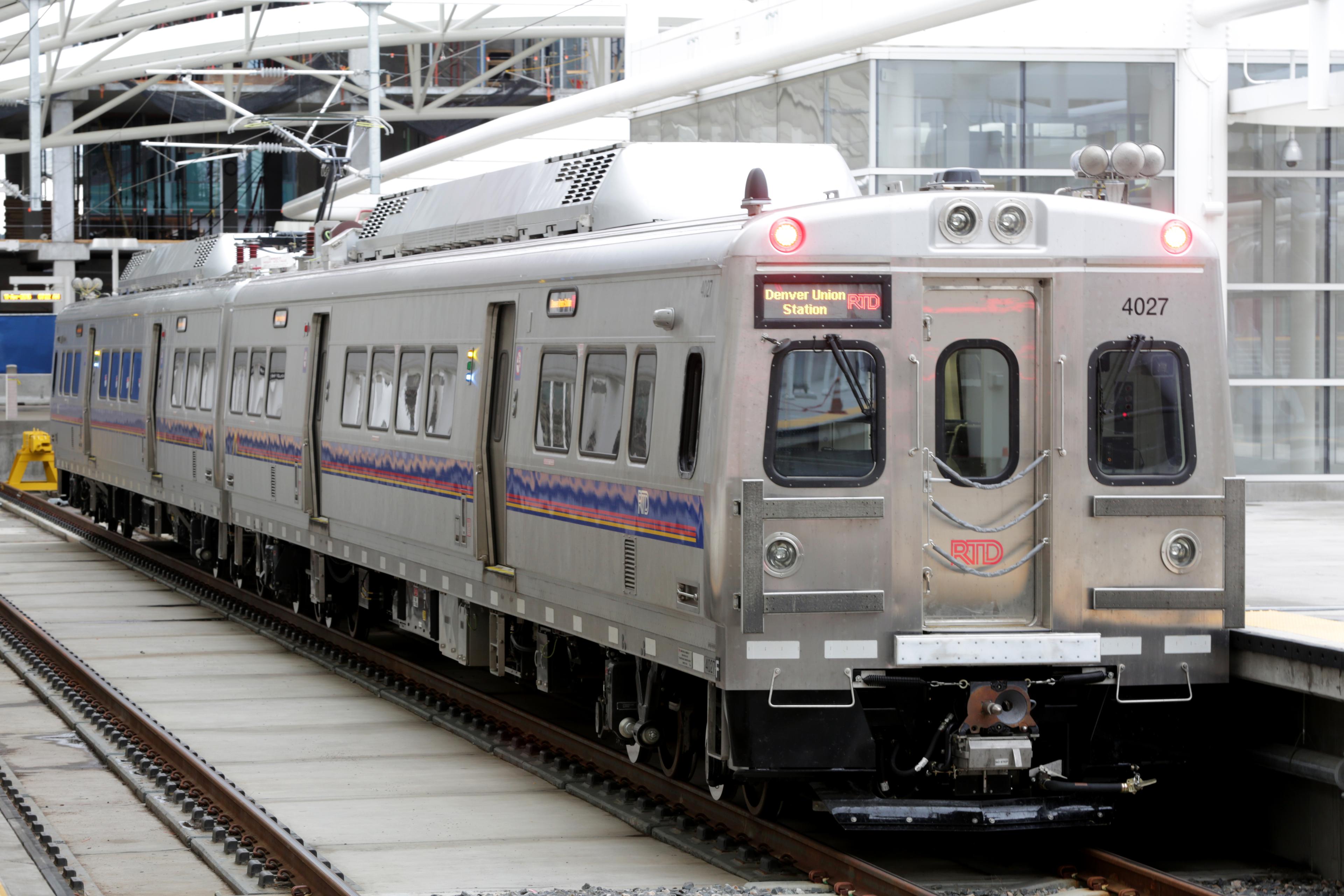
The train to Denver International Airport starts next week. It's the first of four lines opening this year in the metro area. But none of them will go to Boulder and Longmont, even though residents there have paid hundreds of millions of dollars in taxes with the promise of getting rail service.
The train to the Northwest Corridor, called the B Line, will be a reality eventually, according to RTD spokesman Nate Currey, but it could take 20 or 30 years to complete.

RTD won voter approval to raise sales taxes to fund FasTracks, the name of the rail and bus rapid transit system, in 2004. A few years later, the agency anticipated the B Line to Boulder, Louisville and Longmont would open about a decade later, as shown in this video. But that hasn't happened.
Currey spoke with Colorado Matters host Ryan Warner about progress on the B Line, along with Karen Benker, who co-founded the group Citizens for Finishing FasTracks. That group is encouraging public officials and RTD to complete the train service sooner. Benker is also formerly an RTD board member and member of the Longmont City Council. Click on the audio link above to hear the full conversation. Edited highlights are below.
Does RTD promise the rail line will be finished eventually?
Currey: "We promise. We're legally bound and required to build, and we're excited to get to the point where we can. It's a part of the fast track program and there is no intention of not building the rail line."
Why 20 years or more?
Currey: "Our time horizon is 2042, when we would have availability, but having said that, that's thinking that everything will stay the same through that time period. Five years ago we had no financing for the rail lines that are opening up this year, so who knows what will happen in the future. It's highly doubtful that things will stay static through 2042."
RTD doesn't have the money it needs; projected costs have gone up. Why?
Currey: "Construction costs in general went up. Raw materials of building rail went up tremendously. The other costs that were involved, that went up, that a lot of people may not understand the context of, is our partnership with the Burlington Northern Santa Fe Railroad. That's the only corridor in the entire FasTrack system that we were never going to build out and fully own ourselves. We were going to be working with them in leasing slots."
What Karen Benker makes of RTD's explanations:
Benker: "Well, I think a lot has changed since they made some of those decisions. The economy has turned around. So while they were trying to decide how to cut back on the FasTracks program, sales taxes were very low, it's true, and true construction costs were going up. But the recession is over. A lot of things have changed. Sales taxes are going up for cities, for the state, for RTD. In addition, you were talking about Burlington Northern -- a lot of things have changed with the railroad also. The energy sector is diminishing and they just recently -- Burlington Northern -- is in the process of laying off over 4,000 employees across the United States. So I think they're looking for revenue opportunities."
Why Benker is frustrated:
Benker: "When FasTracks was being touted back in 2003-2004 ... we taxed ourselves. We've already paid RTD $260 million over the past eleven years. We would like to have our rail line built in the near future. We're now asking RTD to build it within the next 10 years and not wait until 2042."
Is that a reasonable timeline for RTD?
Currey: "At this point, no it's not. I think it's unrealistic to expect that we could build that. We just don't simply have the funds."
Interview transcript:
Ryan Warner: This is Colorado Matters from CPR News. I'm Ryan Warner. The train to Denver International Airport starts next week. It's the first of four rail lines opening this year in the metro area -- none of which will go to Boulder and Longmont, even though residents there have paid hundreds of millions of dollars in taxes for rail service. It'll happen eventually, according to RTD, but it could be 20 years or more. Nate Currey is spokesman for the agency and Karen Benker leads a citizen effort to get the rail line finished. Welcome to the program.
Nate Currey: Thanks, Ryan.
Karen Benker: Thank you.
RW: So Nate, does RTD promise the rail line to Louisville, Boulder and Longmont will be finished eventually?
NC: We promise. Yeah, we're legally bound and required to build it and we're excited to get to the point where we can. It's part of the FasTracks program and there's no intention of not building the rail.
RW: All right. But 20 years or more? That's quite a timeline.
NC: I think or more is appropriate. Right now our time horizon is 2042 is when we would have availability but having said that, that's thinking that everything will stay the same through that time period. Five years ago we had no financing for the rail lines that are opening up this year so who knows what will happen in the future? I think it's highly doubtful that things will stay static through 2042.
RW: That is to say it could be beyond that.
NC: It could be before that.
RW: Before that. Okay. So you say that that strikes an optimistic chord. When was the original hope to have that corridor built that went into Boulder County?
NC: I believe that all the FasTracks program was scheduled to be built out by next year?
KB: 2017.
NC: Yeah. By next year, 2017.
KB: That was the date the northwest rail line was supposed to be built.
RW: Those are the time horizons and it sounds like, Nate, RTD just doesn't have the money at this point. These rail lines are funded by a sales tax increase that voters agreed to in '04 but revenues came in way below what RTD forecast in the mid-2000s. And the agency was left with a $2 billion funding gap. It was able to build the west line to Golden as we know and the four lines opening this year. But we talked with the RTD board member who represents Boulder and Louisville and he said the board is looking for other kinds of funding besides the sales tax hike to get the rest of it done. There was the recession, obviously, Nate, and costs went up as well. Why, on the latter, what costs went up?
NC: Well, construction costs in general went up. I think that the raw materials of building a rail went up tremendously. The other costs that were involved that went up that a lot of people may not understand the context of is our partnership with the Burlington Northern-Santa Fe Railroad. That's the only corridor in the entire FasTracks system that we were never going to build out and fully own ourselves. We were going to be working with them and leasing slots you could say, along that line.
RW: I mean obviously if you're going to build a new train line, you have to have somewhere to put it and this was essentially, in RTD's eyes, the only reasonable corridor. One that was already operating.
NC: Yeah, I mean the distance that it is to Boulder and Longmont as a corridor is very costly to build out an entire new line. What ended up happening was that as gas prices increased, the viability of freight went way up so all of a sudden those corridors became profitable, very profitable for the railroads and their cost estimates and calculations also changed on us.
RW: That is to say what they would demand from RTD to use those corridors, that cost went up.
NC: Correct. On top of all the raw materials and then the economic downturn that cost us nearly $1.2 billion in sales tax revenue.
RW: All right. Well, rail service is scheduled open this year to Westminster, Wheat Ridge and Aurora. Clearly RTD had to prioritize and choose which rail lines it would work on first. Why was this northwest corridor, again into Boulder county, why is it last on the list?
NC: Well, let's be clear about that. So the line to Westminster or the B-Line is the first segment of the northwest rail so the northwest rail, part of it is opening this year. The full rail build out is not. But we could afford to get to that point and we're again working on that. You know it's a cost calc, cost estimate. It's a business decision and when there's a downturn in revenue like that, you have to take a look at your budget and say what can we afford, what's the best for the region and what's the biggest bang for our buck.
RW: And what was some of the thinking that went into putting this rail line, northwest rail last, prioritizing it last?
NC: I think just the cost and the level of ridership, the distance and then the challenges that we had with our railroad partners made it very clear that the other rail corridors, it was better to prioritize at that point through them for the entire region.
RW: So Karen Benker, again, you lead a citizen's effort to get the rail line finished. I also want to say that you're formerly an RTD board member and a former Longmont city council member. What do you make of the explanations you're hearing from RTD here?
KB: Well, I think a lot has changed since they made some of those decisions. The economy has turned around. So while they were trying to decide how to cut back on the FasTracks program, sales taxes were very low, and true construction costs were going up. The recession is over. A lot of things have changed. Sales taxes are going up for cities, for the state, for RTD. In addition, you were talking about Burlington Northern Railroad, a lot of things have changed with the railroad also. The energy sector is diminishing and they just recently, Burlington Northern is in the process of laying off over 4,000 employees across the United States. So I think they're looking for revenue opportunities.
RW: So what you're saying is that the costs of using that corridor might have gone down some?
KB: And I think they're also interested in talking with RTD. They've said several times recently that if we came forward with a definite plan, they would love to work with us.
RW: All right. And your group is called "Citizens for Finishing FasTracks". What would you say is your level of frustration, given the time horizons we talked about at the beginning?
KB: Well thank you. When FasTracks was being touted back in 2003, 2004, it dealt with the tax increase and so Boulder County, Longmont, the city of Longmont, voters in Boulder county, we all passed it with large margins. And so we taxed ourselves, we've already paid RTD $260 million over the past 11 years. And we would like to have our rail line built in the near future. We're now asking RTD to build it within the next 10 years and not wait until 2042.
RW: Is that a reasonable timeline, Nate, in RTD's eyes?
NC: At this point, no, it's not. I think it's unrealistic to expect that we could build that out. We just don't simply have the funds to do so.
RW: So $260 million in taxes paid out of Boulder county.
KB: And Broomfield county.
RW: And Broomfield county as well, that's right. That's right.
NC: Of a project that's almost $1.5 billion.
RW: So explain to listeners what has happened to that money. Has it gone to pay for other projects? Does that stay in the counties in which the tax was assessed?
NC: Right. So it's important to acknowledge that the FasTracks tax that is collected goes only to FasTracks projects. Now is it earmarked that only folks in Highlands Ranch get their extension? No, it's not. Denver county does not just stay in Denver county. It's the region and it's the district as a whole. So I would posit that the dollars that are coming in regionally, including the communities that we're talking about have benefitted, the University of Colorado A-line that's about to open up next week. Connecting the airport. And that's a huge benefit. The downtown area of Denver itself, Union Station has become an amazing hub and region that is attracting new business. Two billion dollars worth of investment. That's good for the entire region. Not just that neighborhood.
RW: Do you agree, Karen? Do you feel that benefit as a taxpayer?
KB: I do understand why RTD has to build the backbone and the infrastructure of the rail system. However, you can't forget Boulder county and Broomfield county. We're important to the entire region. We need the economic development that rail brings because there's no doubt whatsoever that if you have rail line in your community and you have a rail stop, it's going to be bring development and it's going to bring jobs. So we're patient, very patient. We've been waiting for RTD to come and give us a better date than 2042. We have been looking at the RTD books, we've met with the CFO of RTD and quite frankly their revenue forecasts are looking quite rosy. Things are turning around. They still have $150 million of bonds from the original FasTracks bonding effort that is unencumbered which could go toward this project. There have been some changes at the federal level. There's a new federal transportation plan. There's a small start program, bonds.
RW: With monies attached, you're saying?
KB: Yes. We would have to apply. It's a competitive federal grant.
RW: So there could be a cobbling together of various financial sources you're saying.
KB: Yes.
RW: Nate, I want you to respond to something that Karen just said which is the notion that some in Boulder, and as you mentioned Broomfield counties, might feel a bit forgotten by RTD. Do you think that's true? Is that the full picture?
NC: Well I think that the feeling is there certainly. And our message to that is we have not forgotten Boulder and Broomfield counties.
RW: Are there examples of work RTD has done?
NC: Sure. We've just opened up at the beginning of this year, the first of five new transit lines, which is the Flatiron Flyer, and while it's not rail...
RW: This is bus.
NC: It's bus rapid transit. It is part of the FasTracks program where their tax dollars have gone and invested in a much higher level of service that they're able to get into the downtown area directly from Boulder. It was a combined project with CDOT to where we widened this, the US 36 corridor and 15-minute frequencies often of those buses with a brand new fleet have proven to be very popular. In fact just last week we released data that 46 percent above our projected ridership is actually what's happened this first quarter.
RW: That is to say these buses have proven even more popular than RTD anticipated.
NC: Yeah. We're really tickled about it. So the citizens of Boulder, Boulder county, Broomfield particularly that have these stations, they're responding quite well to the products that we're offering from FasTracks. Is it rail? No, but again we will be building out the full B Line when we can.
RW: We have a map at CPRNews.org, a video as well, that RTD made several years ago explaining where the B Line is supposed to go. And we are talking about new transit lines opening in metro Denver this year and one in particular that will not fully open. It will eventually run up to Boulder and Longmont, according to RTD spokesman Nate Currey, who joins us. And taxpayers around the metro area have paid into this transit fund for about a decade. That includes Karen Benker, who's also with us. She leads a citizen effort encouraging RTD to finish northwest's line sooner than its 2042 timeline.
Okay. There's this fundamental question about whether rail is the way to go. We've talked about bus and its advantages and its popularity. Is there a fixation in some ways, Karen, on rail that's unnecessary here?
KB: No, I feel that rail is just a better investment. You're separated from the road so if for example just a few weeks ago, US 36 closed down because of the snowstorm that we had. Rail doesn't necessarily close when it snows. If there's an accident on the road, you can still go forward with the rail line. And then it's the economic development opportunities that it brings. We also need a seamless transportation system in the Denver metro area. I don’t think it's fair that people can ride rail all across the metro area and then have to get off rail and transfer to a bus, with a bus schedule, trying to figure out where it's going to take them and where they're going to go.
RW: But is there a point at which rail becomes so expensive that it becomes impractical?
KB: You know, I would disagree with that. The northwest rail line is comparable in cost to all the other rail lines that have been built. The numbers that Nate has been talking about are inflated numbers. The most recent number was $1.1 billion, it's a 41-mile rail line. Only six miles are being built right now, part of the Arvada Gold Line, so per cost per mile, we're pretty competitive.
RW: Oh right. You cited a few reasons why you prefer rail to bus. One of them was economic development. I'm assuming that that means transit-oriented development. Businesses and housing that pop up around transit. We've seen this along light rail corridors for instance that are…
KB: Walkable.
RW: Walkable as you say. Nate, is there any evidence that that can't happen around bus?
NC: No. As a matter of fact, we do see that our bus rapid transit stations are experiencing an influx of investment as well along the US 36 corridor and you see that in neighboring peer systems like UTA out in Salt Lake and in some of the East Coast facilities as well. One thing that I will say RTD actually is working with Burlington Northern-Santa Fe as well on this. The challenge again is we don't own that corridor so we have no real say as far as what goes on around that land use policy.
RW: Why didn't RTD lock in a price with BNSF before it went to voters asking for tax money?
NC: Well, I'll turn that around. Why would BNSF want to sign a contract with us before they knew we had voter money? So from a business perspective on their end, it didn't make any sense to commit to anything.
RW: Is it the only corridor along the BNSF lines to expand the northwest rail?
NC: It is what was voted on 2004 and what we are obligated by law to do.
RW: Karen, do you see alternatives for its placement?
KB: There can be. There's been some discussion but if we were to go with another rail route and there's one other option using the UP, you're not going to be hitting all the cities. And I think what the…
RW: Union Pacific.
KB: Union Pacific, yes. What you want to do with rail is to be able to weave through a city so that people can walk to a rail station and so you want to try and hit as many cities in Broomfield, Westminster and Boulder counties as possible.
RW: Nate, assuming this line to Longmont and Boulder is built, do you think it's the last rail line you'd imagine RTD ever building?
NC: Well as far as large capital projects, I can't commit to that right now. But I think that largely our system will have been built out at that point. And once FasTracks is done, there may be a few other opportunities for rail but the next step for us is optimizing the system and making sure that people can overcome that first- and last-mile problem. That solution of how do they actually access the rail.
RW: And I suppose this leads to the question of getting beyond rail and bus to things that are a bit more futuristic. I'm thinking of Elon Musk's Hyperloop or hirable-driverless cars or something like SkyTran that moves pods along an elevated track. That's being tested I think in Baltimore.
NC: Right and I think you bring up a great point with that and that's why I say it's not going to be static between now and 2042. The disruptive technology that we're experiencing or are about to experience will provide new opportunities for RTD, not just with the northwest rail corridor and the finishing of the B Line but in the way we move around the region. And so I think holding that story line of it's going to be till 2042, that's what the reality is today. But who knows in five years what technologies will be available for us to explore?
RW: Does that result in an eye-roll from you, Karen? Talking about…
KB: Well I think what you need to keep in mind is you still need transportation corridors and so what the Burlington Northern rail line does, the northwest corridor does, it provides you another corridor. You're not always relying on highways. So it doesn't matter if there's a locomotive that's moving you along the northwest rail corridor or if there's some other technology in the next 20 years that comes up, you can still use that corridor.
RW: So that's what you're focused on, as opposed to whatever the pod is that moves you along the corridor.
KB: Correct.
RW: Just to check on this, RTD would have to ask voters' permission to not build the rail line.
NC: That's correct.
RW: Is that at all under consideration for the northwest corridor?
NC: No it's not. No and that's an important nuance is the voters are expecting this, and have passed it and we're obligated by law to do so. Any deviation from that would have to go back for voter approval and that's just not in the cards. We don’t want to do that. We don’t need to do that.
KB: But I think it also has to be in our lifetime. I mean we're now talking 20, 25 years away and when we voted on this, we were told that the rail was going to come right around 2017. So that's a considerable difference in terms of dates.
NC: I agree with that. I think that the confidence that the nation has in the Denver region right now shows in the efforts that we have with the Eagle public/private partnership (Eagle P3) that's opening this year. In that it's the largest and only of its kind that we have private investment coming in along with federal monies along with RTD money that have allowed us to open up three rail lines this year.
RW: Thanks to both of you for being with us. Nate Currey, spokesman for RTD. Karen Benker is co-founder of Citizens for Finishing FasTracks. And they talked to us about expanding rail service to Boulder County and Broomfield. The train between Union Station and DIA starts next week. This is Colorado Matters from CPR News.
More FastTracks Coverage:

